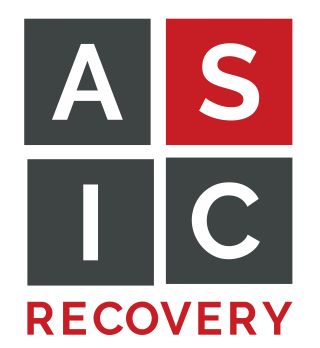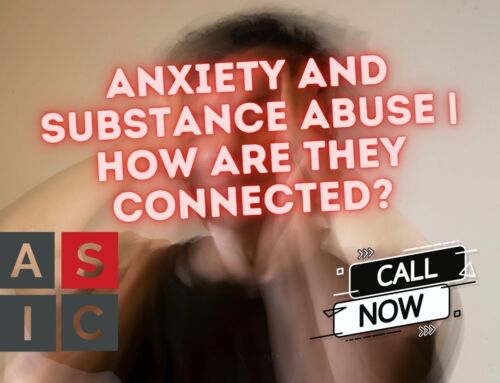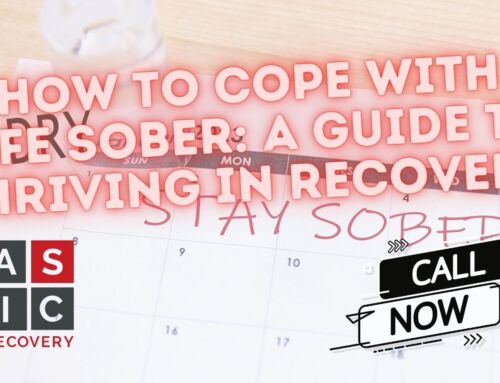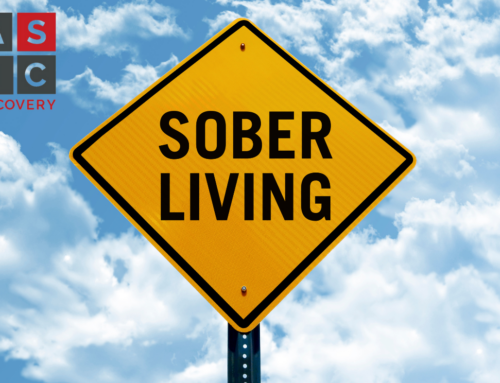There are hundreds, if not thousands, of addictions that people can fall prey to, but all addictions will fall under one of two categories: behavioral and chemical.
Chemical addictions cover both drugs and alcohol and are far more likely to derail someone’s life than behavioral addictions, but that’s not to say behavioral addictions come without risk.
Behavioral addictions, also known as “process addictions,” such as food, sex, internet, gambling, and many others, are more common and far less diagnosed in people since they typically involve legal activities and can easily be dismissed as normal behavior.
Even though behavioral addictions won’t get you thrown in jail or cause your life to derail as quickly, they can still have serious consequences if left unchecked.
At ASIC Recovery, our Intensive Outpatient Program (IOP) is dedicated to helping individuals develop healthier habits and build a life in long term recovery.
Click to learn more.
The Science Behind Addiction
With any addiction, whether it be heroin or sex, the mechanism is the same: addictive substances and activities hijack a person’s chemical reward system, causing significant behavioral changes. They eventually lose the ability to function normally.
Addictive behaviors release dopamine in the brain, and dopamine reinforces the connection between behaviors and feelings of pleasure with the release of additional chemicals like oxytocin and serotonin.
When everything is functioning properly, good feelings are linked with healthy behaviors, such as accomplishing an important task.
However, when people can experience this pleasure by getting high or scrolling through their social media platform of choice, internal wires get crossed, and it opens the door for addictions to settle in.
Chemical Addictions
People are considered “chemically addicted” when their substance use is having a negative impact on their lives and they are unable or unwilling to cut back or quit.
Chemical addictions can derail your life, and quickly, by damaging your health or your social/professional life.
Here are the different types of chemical addictions and some of the most common substances that cause them.
Drug Addiction
Cocaine
Cocaine is a stimulant classified as a schedule II narcotic. This means it has a high potential for abuse, but there is some medical use for it.
Long-term cocaine use has a massive impact on both the brain and the heart. It can result in drastic memory loss and has the potential to cause heart disease.
Cocaine is also commonly cut with other narcotics. This makes even casual use a potentially lethal gamble.
Amphetamines
Amphetamines are central nervous system stimulants classified as schedule II narcotics. They are generally prescription drugs that are used for energy and focus in young adults with narcolepsy or ADHD. The main amphetamines are Adderall, Vyvanse, and Dexedrine.
Addiction to amphetamines is common in high schoolers and college-aged young adults due to their ability to help people focus for long periods of time and complete school work. However, prolonged abuse of prescription amphetamines can result in psychosis, malnutrition, and heart complications.
People also abuse amphetamines while drinking because they cancel out some of the effects of alcohol and allow people to drink for longer periods of time than they would regularly.
Nicotine
Nicotine is a drug whose short-term effects can be overwhelmingly positive, with multiple studies confirming cognitive benefits for attention, working memory, and episodic memory. However, it’s the long-term effects that make nicotine one of the most lethal drugs ever sold.
The risks from long-term nicotine use are nearly endless because cigarettes are the method of choice for ingesting it. Annually, cigarettes are estimated to be responsible for killing 8 million people worldwide, including 1.2 million from secondhand exposure.
And even when it’s not lethal, addiction to nicotine can result in other chronic illnesses that significantly reduce your quality of life.
Opioids
Opioid deaths have become increasingly common since OxyContin was introduced to the market over 3 decades ago. Purdue Pharma assured the medical community that prescribing it to patients would not result in addiction.
In 2017, the Department of Health and Human Services declared the level of opioid addiction a public health emergency, and it’s only gotten worse since then.
Opioids make up 6 of the 7 most dangerous drugs and caused nearly 68,630 of the 91,799 overdose deaths in 2020.
Cannabis
Cannabis is commonly believed to be a non-addictive drug because it doesn’t often result in physical dependence, but psychological addictions to marijuana, which are more common, can cause serious harm.
One of the biggest risks associated with long-term marijuana use is the development of mood disorders like depression and anxiety and some more severe mental disorders like schizophrenia.
There is also a strong correlation between marijuana and lowered IQs when the addiction is formed at a young age.
Alcohol
Approximately 15 million people suffer from alcohol use disorder in the United States, and 300 million worldwide. Alcohol is a nervous system depressant and can severely impair motor functions and cognitive abilities.
Diagnosing alcoholism can be tricky since alcohol use is so pervasive. The lines between what is okay and what isn’t tend to get blurry.
This is why it’s so important to watch out for signs of alcoholism as people who are struggling with alcohol use disorder can easily slip through the cracks.
Behavioral Addictions
Behavioral addictions often go under the radar since their effects are rarely as harmful as drug and alcohol addictions, but they still have negative consequences and should be treated with the same severity to prevent the addictive behavior from getting worse.
Any activity that can stimulate a person has the ability to become addictive, but some are more common than others.
Here are some of the most common behavioral addictions to watch out for.
Food
Foods that are filled with fats, sugars, and salts can mess with the brain’s reward system in the exact same way that drugs and alcohol do, and the phases of food addiction are very similar to that of a drug addict.
This includes cravings for unhealthy food, a tolerance that causes you to eat progressively more food to achieve the same feelings, and even withdrawal symptoms if those foods aren’t available.
Food addictions can even be harder to curb than some drug addictions since food addicts don’t have the ability to choose total abstinence as a way to overcome it.
However, by reducing the amount of sugar, salt, and unhealthy fats in your meals, you can reduce the number of addictive chemicals you ingest and ultimately develop a healthy relationship with food.
Sex
Sex addiction or “hypersexuality” is a disorder characterized by constant fantasizing about or engaging in sexual activity. This addiction is particularly insidious since it’s one of the few that directly involves another person.
Sex addicts will often have a hard time with monogamous relationships since their addiction generally compels them to continue seeking sex from new people.
One of the most significant characteristics of sex addiction is how common it is for other mental health issues to be present at the same time.
According to recent research, around 88% of sex addicts suffer from at least one mental disorder. Anxiety, bipolar disorder, ADHD, and OCD are the most common.
Social Media
Social media can be a great source for networking, learning, and entertainment, but far too often the first two uses are ignored and the last one becomes the primary goal.
There are a number of negative consequences to obsessive social media consumption, but here are the main three.
Decreased empathy
Decreased empathy in addicts happens because most communication is done to anonymous avatars, and it becomes easy to forget that there is a real person on the other end of them.
Decreased attention span
Decreased attention span is a natural side-effect of all social media, but it’s especially common in social media addicts who spend 3+ hours every day consuming thousands of bits of content that only last a few seconds.
This makes learning anything increasingly difficult, and it inhibits a person’s ability to perform normal daily functions when their attention span is withering away.
Decreased self-esteem
Sites like Instagram and Facebook are notorious for having users who project a glamorous and fake image of what their lives are like, prompting comparisons and needs for validation in other users across the web.
People who are on their smartphones for 5+ hours a day are twice as likely to develop depression, and at least part of that stems from not living up to unrealistic standards that other social media users are setting.
Gambling
Most people enjoy the experience of putting a little bit of money on the line and then letting fate decide what comes next. It’s a very particular type of thrill that’s hard to replicate in anything else.
For addicts, the problem comes from not knowing when or how to walk away when fate isn’t on their side. When things continue to go south, it’s not uncommon for gambling addicts to turn to substance abuse and even criminal behavior to cope with and support their addiction.
Treatments for Addiction
Fortunately, there are many treatments available for addictions of all kinds. Here are a few of the most common ones.
Cognitive Behavioral Therapy
Cognitive behavioral therapy (CBT) is a type of therapy that can help you defeat addictive behaviors by demystifying the connection between human thought and behavior.
Using CBT, therapists will go after an individual’s “automatic negative thoughts” and slowly reveal how harmful habits have been unconsciously formed by negative thought patterns.
Once these automatic negative thoughts are controlled, you can start to build up new beliefs that will go on to positively influence behavior and habit-making.
Medication
There’s a wide range of medications that can be used to combat addiction. These range from mild narcotics to help alleviate withdrawal symptoms to anti-anxiety and antidepressant medications that treat some of the root causes of your addiction.
Support Groups and 12-Step Groups
Support groups are incredibly helpful to anyone struggling with addiction, and there are many more types than just Alcoholics Anonymous or Narcotics Anonymous.
Support groups allow you to learn from people who have overcome similar addictions as well as help you grow your social network to include people who will help you stay the course and overcome your addiction.
Do You Have Addictive Behaviors?
The DSM 5 has identified 11 criteria for addiction, with 3 stages ranging from mild (2-3 criteria met) to moderate (4-5) and severe (6+). The list is written for chemical addictions, but the same standards can be applied to behavioral addictions.
- Taking more of the substance than you meant to
- Wanting to stop or slow down using the substance but being unable to do so
- Spending a lot of time getting, using, or recovering from the use of the substance
- Cravings and urges to use the substance
- Not managing to do what you should at work, home, or school because of the addiction
- Continuing to use even when it causes problems in relationships
- Giving up other important activities because of substance use
- Using substances again and again, even when it puts you in danger
- Continuing to use, even when you know you have a physical or psychological problem that could have been caused or made worse by the substance
- Needing more of the substance to get the same effect (tolerance)
- Development of withdrawal symptoms, which can only be relieved by taking more of the substance
If you’re finding that some of your habits are causing significant disruption in your life, it might be time to take action.
IOP at ASIC Recovery
Are you looking for addiction treatment in Texas? At ASIC recovery, our Intensive Outpatient Program (IOP) is dedicated to helping you develop healthier coping skills and build a supportive recovery network.



